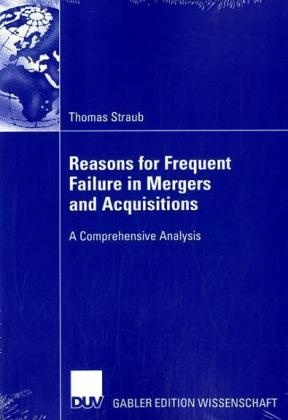Read more
Despite the goal of performance improvement, results from mergers and acquisitions (M&A) are often disappointing. Numerous empirical studies show high failure rates of M&A deals. Studies are mostly focused on individual determinants. The literature therefore lacks a more comprehensive framework that includes different perspectives.
Using four statistical methods, Thomas Straub shows that M&A performance is a multi-dimensional function. For a successful deal, the following key success factors should be taken into account:
? Strategic logic which is reflected by six determinants: market similarities, market complementarities, operational similarities, operational complementarities, market power, and purchasing power.
? Organizational integration which is reflected by three determinants: acquisition experience, relative size, cultural compatibility.
? Financial / price perspective which is reflected by three determinants: acquisition premium, bidding process, and due diligence.
All 12 variables are presumed to affect performance either positively or negatively. Post-M&A performance is measured by synergy realization, relative performance (compared to competition), and absolute performance.
List of contents
Reasons for M&A Failure - a Comprehensive Model
Strategic Management
Market similarities, Market Complementarities, Operational Similarities, Operational Complementarities, Market Power, and Purchasing Power
Organizational Behavior
Acquisition Experience, Relative Size, Cultural Compatibility
Financial / Price Perspective
Acquisition Premium, Bidding Process, and Due Diligence
Quantitative Research
Partial least squares (PLS)
Comprehensive Model using Structural Equation Modelling
Comprehensive Performance Measure
About the author
Thomas Straub ist Professor für Strategisches Management und Organisation an der Hochschule Fribourg, Schweiz. Er unterrichtet des weiteren an der Universität Genf (Einführung in die Allgemeine BWL) sowie an der Universität Bukarest am Lehrstuhl der UNESCO.

